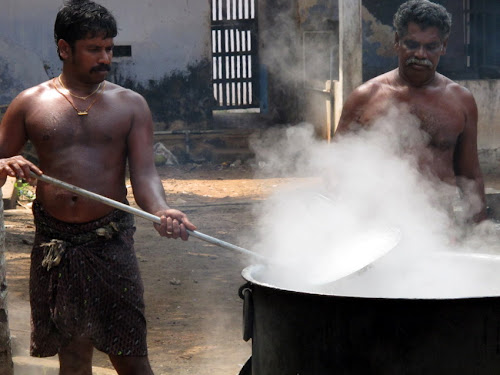
At the beginning of March, I said goodbye to my parents and went to the Sivananda Yoga Ashram outside Trivandrum for a week. The asana classes were great and I met many nice people. However, the strict rules and the chanting for several hours a day was a bit too much.

the main hall

lunch time

We celebrated the festival of Shivaratri and chanted Om Nama Shivaya all night long.




























































